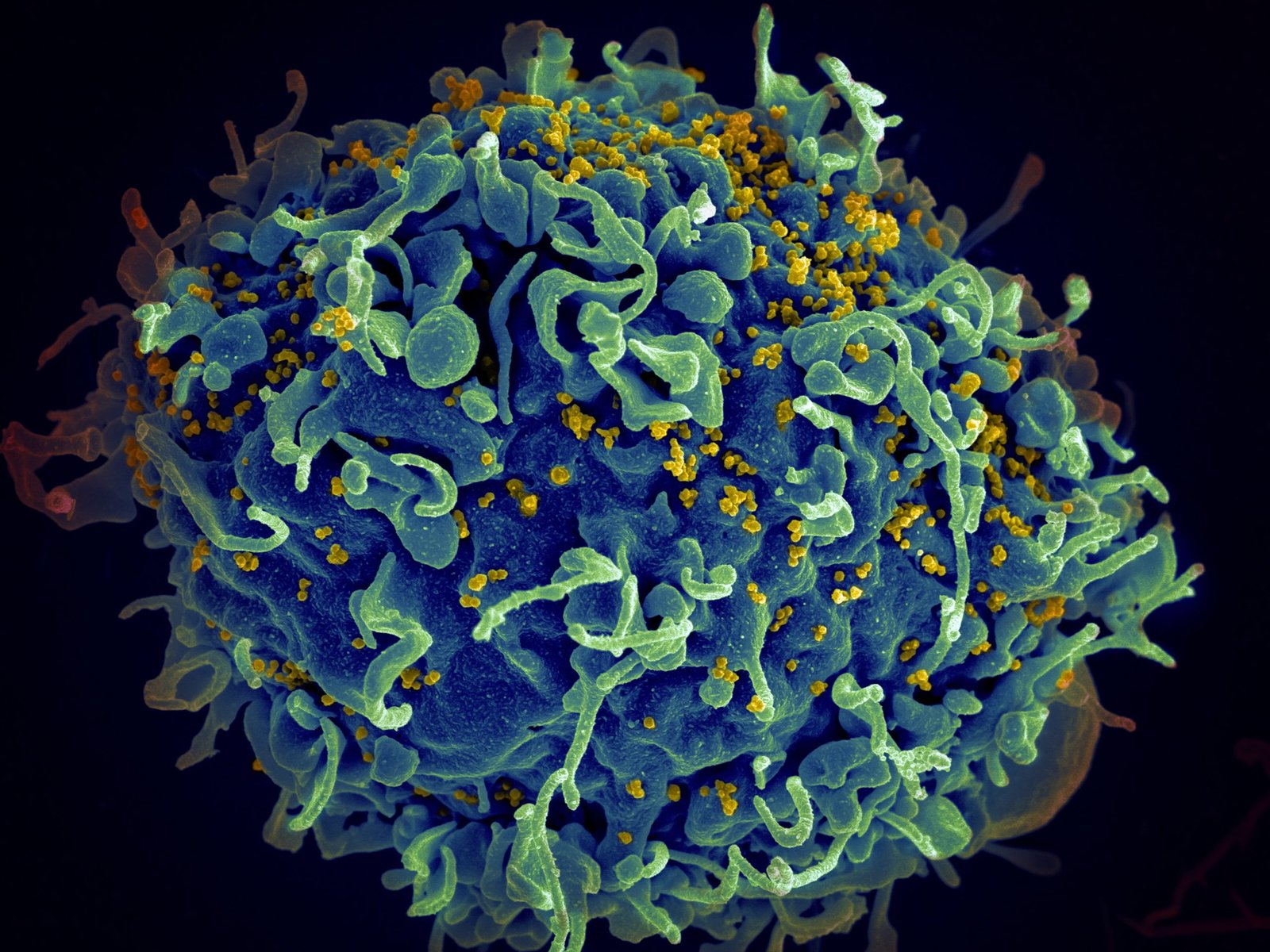Understanding the Progress: Is HIV Really Curable?
In recent years, the progress in medical research and technology has sparked hope for finding a cure for HIV. This infectious virus has plagued millions of lives and caused a global health crisis for decades. But is HIV truly curable? In this article, we will delve into the latest advancements, separating fact from fiction, to understand the current state of developments in treating and potentially eliminating HIV.
Thanks to breakthroughs in antiretroviral therapy (ART), people living with HIV can now lead longer and healthier lives. However, completely eradicating the virus from the body is still a challenge. While some cases of HIV remission have been reported, a true cure remains elusive.
Scientists and researchers continue to explore different approaches, including gene editing and immunotherapy, in the pursuit of a functional and sterilizing cure. The road to an HIV cure is paved with complex scientific hurdles, ethical considerations, and the need for long-term monitoring.
Join us as we explore the progress made in understanding and treating HIV, and what lies ahead in the search for a real cure.
The history of HIV research and treatment
HIV, or Human Immunodeficiency Virus, was first identified in the early 1980s, and since then, extensive research has been conducted to understand the virus and develop effective treatments. The early years were marked by fear and uncertainty, as HIV/AIDS rapidly spread and claimed countless lives. However, as scientists began to unravel the mysteries surrounding the virus, treatment options started to emerge.
One of the major breakthroughs came in the mid-1990s with the introduction of antiretroviral therapy (ART). This revolutionary treatment approach involved using a combination of drugs to suppress the replication of the virus in the body. ART not only helped people with HIV live longer, but it also transformed the disease from a death sentence to a manageable chronic condition.
Despite the significant progress made in HIV treatment over the past few decades, completely eradicating the virus from the body has proven to be extremely challenging. While ART can effectively suppress viral replication, it cannot eliminate the virus entirely. This has led scientists to explore alternative approaches in the search for a cure.
Progress in HIV treatment options
Antiretroviral therapy (ART) has been the cornerstone of HIV treatment for many years. The therapy typically involves a combination of three or more antiretroviral drugs that target different stages of the virus’s life cycle. By inhibiting viral replication, ART helps to suppress the virus, reduce the viral load in the body, and preserve immune function.
ART has been incredibly successful in improving the health outcomes of people living with HIV. With proper adherence to treatment, individuals can achieve an undetectable viral load, which not only improves their own health but also reduces the risk of transmitting the virus to others. This concept, known as Undetectable = Untransmittable (U=U), has played a crucial role in HIV prevention efforts.
However, while ART is highly effective at managing HIV, it is not a cure. The virus remains dormant in certain cells of the body, known as reservoirs, and can reemerge if treatment is interrupted. This is one of the main challenges in finding a cure for HIV – the ability of the virus to hide and evade the immune system.
Antiretroviral therapy (ART) and its effectiveness
While a true cure for HIV remains elusive, there have been cases where individuals achieved long-term remission without the need for ongoing treatment. This phenomenon, known as post-treatment control or functional cure, has provided hope and insights into potential strategies for achieving a cure.
The most well-known case of HIV remission is the “Berlin patient” Timothy Ray Brown. Brown, who was living with HIV and leukemia, underwent a stem cell transplant from a donor with a rare genetic mutation that confers resistance to HIV. Following the transplant, Brown’s HIV levels became undetectable, and he has remained off ART for over a decade with no signs of the virus rebounding.
While cases like Timothy Ray Brown’s are exceptional, they have paved the way for further research into potential curative strategies. Scientists are now exploring approaches such as gene editing, immunotherapy, and latency-reversing agents to target the virus in its hidden reservoirs and potentially achieve long-term remission or a sterilizing cure.
The concept of HIV remission and cure
One of the most exciting areas of HIV cure research is gene editing. Techniques such as CRISPR-Cas9 hold the potential to precisely target and modify the HIV genome, disabling the virus and preventing it from replicating. While still in the early stages of development, gene editing shows great promise for developing a cure for HIV.
Another approach being explored is immunotherapy, which harnesses the power of the immune system to target and eliminate infected cells. This involves enhancing the body’s immune response to specifically recognize and destroy HIV-infected cells. Immunotherapies such as broadly neutralizing antibodies and therapeutic vaccines are currently being studied and have shown encouraging results in clinical trials.
Additionally, researchers are investigating latency-reversing agents (LRAs) that can activate the dormant virus in reservoir cells, making them visible to the immune system and allowing for their elimination. While LRAs alone may not be sufficient to achieve a cure, combining them with other curative strategies holds promise for disrupting the viral reservoirs and potentially achieving a functional cure.
Promising advancements and potential cures
The road to finding a cure for HIV is riddled with challenges and limitations. One of the main hurdles is the sheer complexity of the virus itself. HIV has a high mutation rate, which means it can quickly adapt and develop resistance to drugs or immune responses. This makes it difficult to develop targeted therapies that can effectively eliminate the virus.
Ethical considerations also come into play when conducting HIV cure research. Clinical trials involving potentially curative interventions need to balance the risks and benefits for participants, ensuring their safety and well-being. Additionally, the high cost associated with developing and implementing curative interventions poses a significant barrier to widespread access.
Another challenge is the need for long-term monitoring. Even if a cure is achieved in some individuals, it is crucial to monitor their health over an extended period to ensure the virus does not rebound. This requires ongoing follow-up and surveillance, which can be resource-intensive and logistically challenging.
Challenges and limitations in finding a cure
Clinical trials play a critical role in advancing HIV cure research. These trials are designed to evaluate the safety and efficacy of new interventions, ranging from novel drugs to innovative treatment strategies. They provide a platform for researchers to test hypotheses, gather data, and refine their approaches.
Participation in clinical trials is voluntary and requires informed consent from participants. These trials are conducted in multiple phases, with each phase building upon the results of the previous one. Phase I trials focus on safety, Phase II trials assess effectiveness, and Phase III trials involve larger populations to establish the intervention’s efficacy and safety profile.
By participating in clinical trials, individuals not only contribute to the advancement of HIV cure research but also gain access to cutting-edge treatments and close monitoring by experienced healthcare professionals. Clinical trial participants play a vital role in shaping the future of HIV treatment and potentially finding a cure.
The role of clinical trials in HIV cure research
While a definitive cure for HIV has not yet been achieved, the ongoing progress in research and treatment provides hope for the future. Scientists and researchers are continually exploring new avenues and innovative strategies to tackle the virus and potentially achieve a cure.
Advancements in gene editing, immunotherapy, and latency-reversing agents hold great promise and are likely to play a significant role in future HIV cure research. However, it is important to manage expectations and acknowledge the complexity of the virus and the challenges that lie ahead.
In the meantime, efforts to expand access to effective HIV prevention and treatment, such as widespread testing, early diagnosis, and improved access to antiretroviral therapy, remain crucial in reducing the burden of HIV and improving the lives of those affected by the virus.
The future of HIV treatment and potential for a cure
While HIV remains a formidable global health challenge, the progress made in understanding and treating the virus is undeniable. Breakthroughs in antiretroviral therapy have transformed HIV from a life-threatening disease to a manageable chronic condition. The concept of HIV remission and potential cures offer hope for a future without HIV.
The road to an HIV cure is complex and multifaceted, requiring collaboration and perseverance from scientists, researchers, healthcare professionals, and individuals affected by HIV. Continued investment in research, clinical trials, and innovative approaches is essential to make further strides in the search for a cure.
In the fight against HIV, it is crucial to remember that every step forward, no matter how small, brings us closer to our ultimate goal: an HIV-free world. By understanding the progress, supporting ongoing efforts, and promoting awareness, we can collectively work towards a future where HIV is truly curable.
Thanks to breakthroughs in antiretroviral therapy (ART), people living with HIV can now lead longer and healthier lives. ART works by suppressing the replication of the virus, allowing the immune system to recover and effectively control the infection. This treatment has revolutionized HIV care, reducing the mortality rate and improving the quality of life for those infected.
However, completely eradicating the virus from the body is still a challenge. Even with long-term adherence to ART, HIV remains latent in certain cells, known as reservoirs, which can reactivate and cause viral rebound if treatment is interrupted. This persistent reservoir of HIV poses a major obstacle in achieving a cure.



